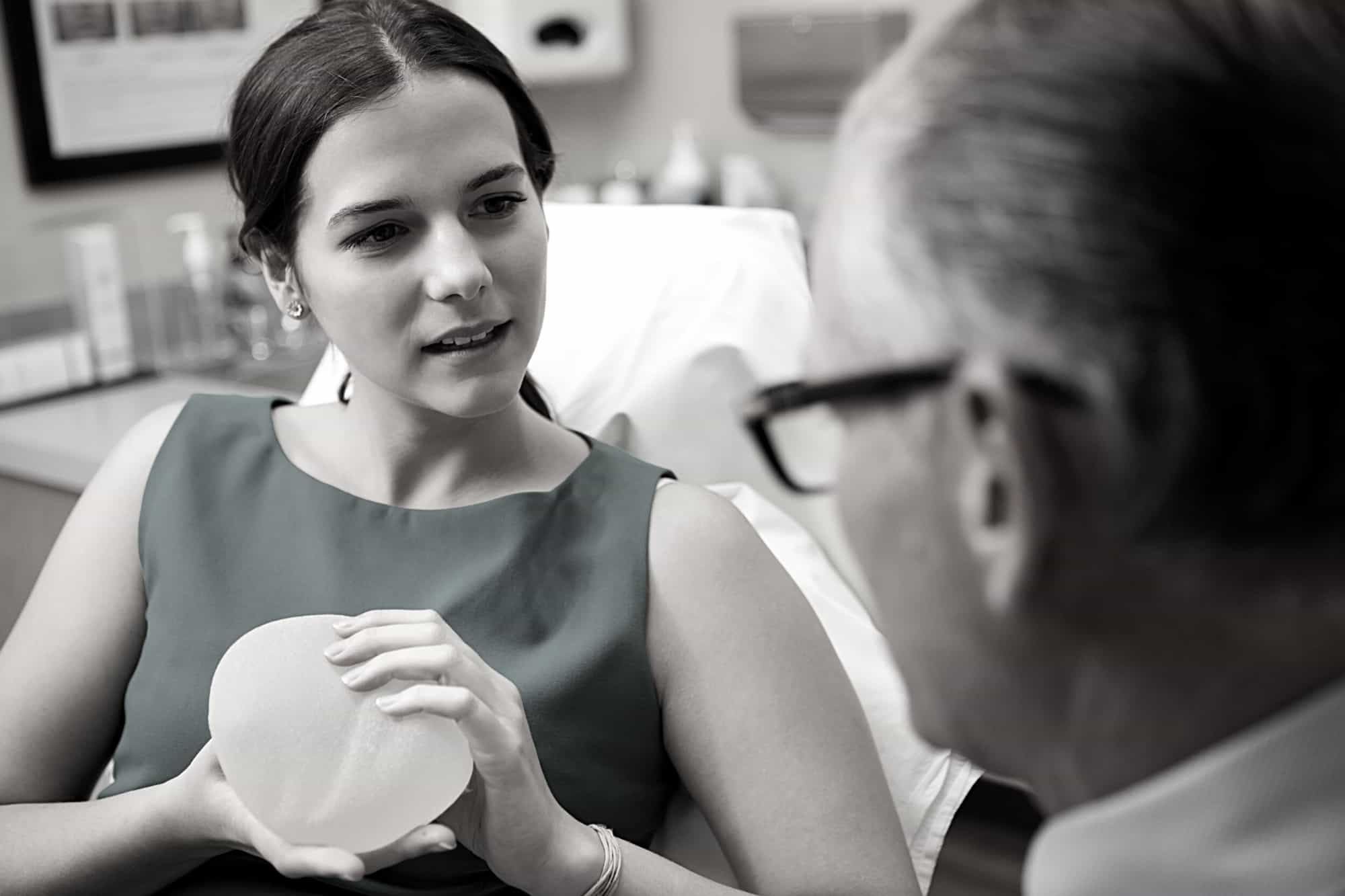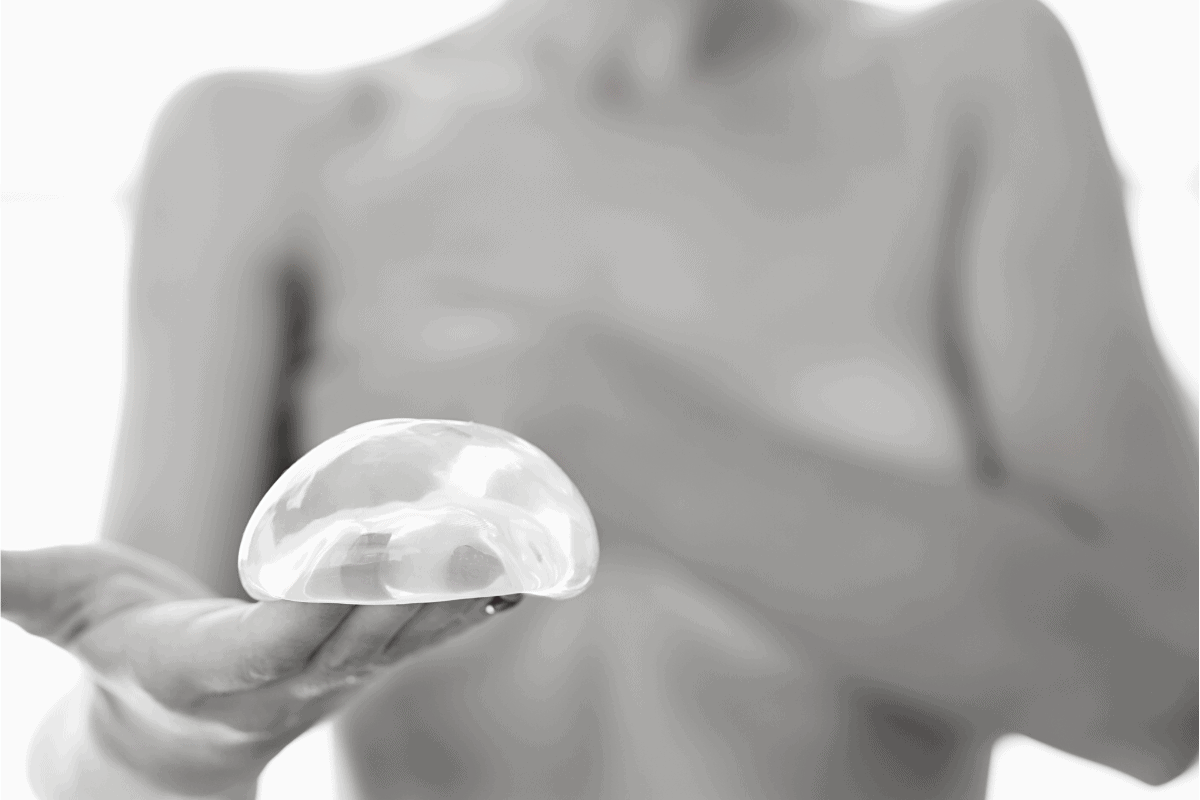October 4th, 2024
Dr. Mulholland, Md
Have you ever felt that your breast size affects your lifestyle, causing discomfort or health issues? If so, you’re not alone. Macromastia (the technical name for overlarge beasts) affects between 1-5% of the US female population, according to a 2021 study, and there are often cosmetic reasons to reduce breast tissue, even when it is not clinically indicated. Many women seek ways to reduce their breast size for reasons ranging from physical discomfort to personal aesthetics. This guide explores why breast size matters, the reasons behind seeking a reduction, and the range of solutions available.
What is Macromastia?
Macromastia, also known as gigantomastia, or breast hypertrophy, is the development of unusually large boobs due to an excess of breast tissue. The condition usually develops in early adolescence and can have significant detrimental physical and mental health consequences.
A 2012 study published in the American Academy of Pediatrics concluded that “macromastia has a substantial negative impact on health-related quality of life, self-esteem, physical symptoms, and eating behaviours in adolescents with this condition.”
In adults, the presence of excessively large breasts can lead to back and neck pain, rashes or skin discoloration, and restrictions on the types of activities the sufferer can engage in. It can be hard to buy bras and clothing that fit properly, and an individual’s self-esteem can suffer if the problem is not addressed.
What Causes Large Breasts?
Large breasts can result from several factors, each contributing in different ways to breast development. Understanding these can help determine the most effective reduction strategies.
Here is a breakdown of the main reasons for macromastia:
- Hormonal Changes: Fluctuations in estrogen levels can significantly contribute to breast size increase during various life stages, such as puberty or menopause. In addition, increases in estrogen and progesterone at the early to middle stages of the menstrual cycle can result in a temporary increase in breast duct size, which may exacerbate any macromastia condition.
- Genetics: Your genes play a crucial role in determining your breast size, influencing how you respond to hormonal changes throughout your life. Daughters of mothers with large breasts are likelier to develop the same qualities, in other words.
- Weight Gain: Increases in overall body fat can lead to larger breasts, since they are partly composed of fatty tissue. Dieting can therefore result in a reduction in breast size, although the effects for women with true macromastia may make dieting an insufficient intervention.
- Pregnancy and Breastfeeding: During pregnancy and breastfeeding, breasts may enlarge temporarily due to hormonal changes and milk production. Breasts will tend to reduce by around the same percentage they increased during pregnancy – around 22% on average, according to one study.
- Medications: Certain medications, including hormonal birth control, estrogen supplements, and antidepressants, can contribute to an increase in breast size. Therefore, coming off such medications may cause a consequential reduction in breast size.
4 Ways to Reduce Breast Size Naturally
Fortunately, for those suffering from excessive breast size, there are a range of interventions, both lifestyle-related and clinical, that can help. Here are the seven most common methods of breast tissue reduction naturally:
- Exercise: Specific exercises can target the upper body, potentially reducing the appearance of breast fat. It’s important to note, however, that these exercises cannot directly decrease non-fatty breast tissue.
- Pros:
- Enhances overall health and promotes a fit physique.
- Targeted upper body workouts can improve muscle tone around the chest, reducing the appearance of breast size.
- Cons:
- Cannot specifically decrease breast tissue.
- Results may vary significantly between individuals, and changes in breast size can be minimal.
- Pros:
- Diet: Adopting a diet aimed at reducing overall body fat can indirectly decrease breast size. For best effect, focus on whole foods and reducing calory intake.
- Pros:
- Losing overall body fat through a balanced diet can indirectly reduce breast size, especially as breasts contain fatty tissue.
- A healthier diet promotes overall well-being and can improve body image and confidence.
- Cons:
- Breast size may not proportionately decrease with weight loss, which can be frustrating for those seeking significant changes.
- Dieting requires long-term commitment and discipline.
- Pros:
- Hormonal Treatment: For patients whose breast size is significantly influenced by hormonal imbalances, consulting with a specialist about potential hormonal treatment is advisable.
- Pros:
- Can address underlying hormonal imbalances that contribute to increased breast size.
- Potentially offers a more targeted solution than the above lifestyle changes.
- Cons:
- Requires medical supervision and can have side effects depending on the treatment.
- Not suitable for everyone, and effectiveness can vary based on individual hormonal profiles.
- Pros:
- Clothing: Various types of clothing can reduce the appearance of large breasts. Here are some interventions you might try:
- Compression Garments: These garments can temporarily alter the size and appearance of breasts, providing support and comfort. Sports bras are a common type of compression garment.
- Pros:
- Provides immediate change in the appearance of breast size.
- Supports and reduces movement during physical activity, reducing discomfort.
- Cons:
- The size reduction is purely cosmetic and temporary.
- Such clothing can be uncomfortable if worn for extended periods.
- Pros:
- Bra Choice: Choosing the right bra can make a significant difference in how your breasts are highlighted and supported.
- Pros:
- Properly fitted bras can significantly improve comfort and reduce physical strain caused by larger breasts.
- Enhances the appearance of breasts, making them look more proportional to the body.
- Cons:
- High-quality bras that offer good support can be expensive.
- Incorrect sizing can lead to discomfort and health issues like back pain.
- Pros:
- Outfit Tips: Certain styles and cuts can visually minimize breast size, offering an aesthetic approach to reduction.
- Pros:
- Strategic clothing choices can visually reduce the look of larger breasts.
- Should boost confidence by enhancing personal style and comfort.
- Cons:
- Does not physically alter breast size, leading to potential disappointment.
- Limited by fashion trends and personal style preferences.
- Pros:
- Compression Garments: These garments can temporarily alter the size and appearance of breasts, providing support and comfort. Sports bras are a common type of compression garment.
Breast Reduction Surgery
Breast reduction surgery involves removing excess breast tissue and skin to achieve a breast size in proportion with your body. It can significantly improve physical symptoms such as back pain or discomfort.
- Pros:
- Provides the most significant and immediate results for breast size reduction.
- Can alleviate discomfort and physical issues such as back pain, skin irritation, and posture problems.
- Cons:
- Involves risks like any surgical procedure, including scarring and reactions to anesthesia.
- Recovery can be lengthy and sometimes painful, with potential for complications.
Macromastia surgery typically includes liposuction to remove excess fat and may involve reshaping the remaining breast tissue for optimal results.
Here’s a more detailed breakdown of what to expect:
Consultation and Evaluation
- Initial Consultation: Meeting with a plastic surgeon to discuss goals, expectations, and options.
- Medical Evaluation: Assessment of overall health, breast composition, and any medical issues that could affect surgery.
- Discussion of Outcome: Understanding realistic outcomes and potential risks.
Preoperative Preparations
- Medical Tests: Blood tests, mammograms, and optional cardiovascular evaluation.
- Medication Adjustments: Advising on stopping or substituting certain medications.
- Pre-Surgery Instructions: Guidelines on eating, drinking, and medication use on the day of surgery.
Anesthesia
Administration of Anesthesia: General anesthesia is commonly used to ensure that the patient is asleep and pain-free throughout the procedure.
The Surgery
Incision: Various incision patterns and techniques may be used, typically around the areola, vertically down to the breast crease, and horizontally along the crease.
- Removal of Tissue: Excess fat, glandular tissue, and skin are removed to reduce and reshape the breast.
- Repositioning: The nipple and areola are repositioned to a more natural placement.
- Suturing: Incisions are closed using sutures in the breast tissue and using skin adhesive, sutures or surgical tape for skin sealing.
Immediate Postoperative Phase
Monitoring: Post-surgery monitoring to manage pain and watch for any immediate complications.
- Drainage Tubes: Temporary placement of small tubes to drain any excess blood or fluid.
Recovery
- Hospital Stay: Short stay in the hospital, typically overnight.
- Home Recovery: Instructions for care at home, including how to look after the surgical site and drains, which medications to take for pain, and when to follow up with the surgeon.
- Activity Restrictions: Guidelines on rest, lifting, and when normal activities can be resumed.
Follow-Up Care
- Follow-Up Visits: Monitoring progress, removing drains, and assessing the healing process.
- Long-Term Care: Guidance on scar care and monitoring ongoing breast health.
Outcomes and Recovery
Post-surgery, patients can expect a significant reduction in breast size and relief from symptoms caused by overly large breasts.
- Immediate Postoperative Period (First Week):
- First 24 Hours: Patients often stay in the hospital or surgical facility overnight for monitoring. Pain and discomfort are managed with prescribed medications.
- First Few Days: Swelling and bruising are common, and drains may be in place to remove excess fluids. Patients are encouraged to move around to promote circulation but must avoid strenuous activities.
- Short-Term Recovery (First Month):
- First Week: Patients typically wear a surgical bra 24 hours a day to support the breasts and minimize swelling.
- Two to Three Weeks: Most patients can return to non-strenuous work and gradually resume their daily activities. Stitches are usually removed during this period unless they are absorbable.
- End of First Month: Swelling continues to decrease, and pain should subside. More normal activities can be resumed, but heavy lifting and vigorous exercise should still be avoided.
- Long-Term Recovery (Up to Six Months):
- Six Weeks: Patients can return to most activities, including more vigorous exercise, although contact sports or activities that may strain the chest should still be avoided until fully healed.
- Three to Six Months: Scarring begins to mature and fade, though it can take up to a year or more for scars to fully settle and lighten. The final shape of the breasts also settles during this period.
- Ongoing Monitoring: Annual Check-Ups: Regular visits to the surgeon may be recommended to monitor the outcomes and ensure no long-term complications arise.
Risks and Consultation
Discussing potential risks with a qualified surgeon is crucial, as with any surgical procedure. Here’s a brief list of the possible complications that can occur:
- Infection: The surgical sites may become infected, requiring treatment with antibiotics.
- Bleeding and Bruising: Some bleeding is expected, but excessive bleeding may require further intervention.
- Scarring: While scars are inevitable, their severity can vary. Proper care can help minimize their appearance.
- Changes in Sensation: Some patients experience temporary or permanent changes in breast or nipple sensation.
- Asymmetry: The breasts may not be perfectly symmetrical post-surgery.
- Adverse Reactions to Anesthesia: Some individuals may react negatively to the anesthesia used during the procedure.
Given these risks, it’s crucial to have a detailed discussion with a surgical specialist who can provide personalized information based on your medical history and individual circumstances.
If you’re thinking about having breast reduction surgery, we highly recommend a consultation with a specialist at TPS to discuss options and ensure the best possible outcome.
6 Non-Surgical Procedures to Lose Breast Fat
There isn’t just one type of surgical procedure for breast tissue reduction. At TPS, we can offer six potential treatments, as follows:
- Vaser Liposuction: A less invasive form of liposuction that uses ultrasound technology to break down fat cells. This method is particularly favored for its ability to selectively target fat without damaging surrounding tissues, resulting in less downtime and quicker recovery.
- BodyTite: Uses radiofrequency energy to firm tissue and break down fat, suitable for small reductions and contour improvements. BodyTite is beneficial for those looking for minimal recovery time and noticeable, natural-looking results without extensive surgery.
- SmartLipo: This laser technology is effective for precise fat removal and is less disruptive than traditional liposuction. SmartLipo also stimulates collagen production, which can help tighten the skin in the treated area, enhancing the overall appearance.
- UltraShape: A non-invasive option that uses ultrasound technology to target and destroy fat cells. UltraShape is a painless procedure that requires no anesthetics or downtime, providing a hassle-free solution to reduce localized fat.
- VelaShape: Combines infrared light, radiofrequency, and vacuum technology to reduce fat layers and firm skin. VelaShape is not only effective in reducing fat but also improves skin texture and may reduce the appearance of cellulite, providing a holistic approach to body contouring.
- Zerona: A low-level laser therapy procedure aimed at disrupting fat cell membranes, causing the cells to release their stored fatty acids. Zerona is completely non-invasive, involves no needles or surgery, and requires no downtime, which makes it an appealing option for fat reduction in the breast area and other parts of the body.
Conclusion
Reducing breast size can be a crucial decision influenced by personal and health-related factors. Whether you opt for lifestyle changes, surgical procedures, or non-surgical alternatives, it’s essential to consult healthcare professionals to choose the best method tailored to your needs and circumstances.
Don’t hesitate to reach out to one of TPS’s surgical specialists to discuss the best strategy for your breast reduction journey.



